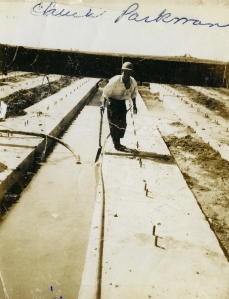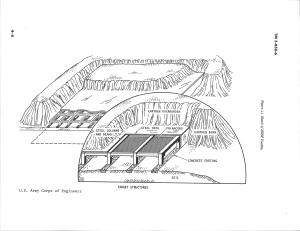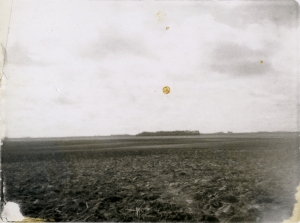Home » Posts tagged 'HEST'
Tag Archives: HEST
“Yeah, but would it have worked?”
When guests see the extreme design features of the below ground launch control center and equipment building at Oscar-Zero, they are typically amazed and impressed. Most guests have never seen anything like a 13.5 ton blast door, a floor that is suspended from the ceiling by shock isolators, or 5.5 feet-thick concrete and steel walls. After taking in all the unique features, a few guests always ask, “Yeah, but would it have worked?” The Air Force asked that same question.
Along with all of the testing that the Air Force has conducted for the Minuteman system, the High Explosive Simulation Test (HEST) was designed to answer that very question—would the design features that supposedly made Minuteman survivable actually work?
In simplest words, the idea of HEST was to cover a launch facility (missile silo) or launch control center with explosives and then blow it up and see what happened. Or as the military explained:
The objective of the technique is to simulate the overpressure and superseismic air-induced ground shock from a nuclear detonation. Operational and small scale tests have demonstrated the feasibility of simulating overpressures (for about the first 200 msec) from yields up to 10 Mt and for overpressures up to 3000 psi.
In order to pull off this test, a HEST facility needed to be constructed. According to the military,
A HEST facility consists of a platform structure constructed above the surface of the ground over the installation to be tested. The platform supports an overburden of earth and forms a cavity between the bottom of the overburden and the ground. An earthen embankment is built around the perimeter of the platform. Primacord is wrapped on wooden racks that are suspended in the cavity. . . .The intensity of the pressure pulse depends primarily on the loading density (amount of explosives per unit cavity volume).
The Air Force conducted two HESTs in the Grand Forks missile wing at launch facility L-16. Because that silo was only about 20 miles from Oscar-Zero we are often visited by citizens who still remember (usually with a puzzled sort of laughter) the time the Air Force blew up their own missile silo. The first test was on September 22, 1966. The second was two years later on September 5, 1968.
The results of the 1966 test were dismal. The silo was subjected to overpressures estimated at 1,000 psi and it suffered severe damage. The Air Force summed up the results:
Loose soil . . . and a high water table contributed to displacement and flooding of the underground launch equipment room and some flooding in the [launch] tube itself. Normally, the water within the launcher could have been pumped out, but the movement of the shock-mounted floor of the equipment room had been violent enough to break the emergency power line, leaving the pumps useless. The shock wave also forced mud into the air conditioning system, disabling it and insuring the gradual overheating of delicate electronic equipment. Mud buried the batteries that provided emergency power but did not disable them.
The Air Force immediately responded to the poor results by spending an estimated $49.5 million on shock improvements for the nation’s Minuteman systems. While they did change the design of some pipes, blast valves, and conduits, most of the money was spent on “correcting faulty welds, insuring sufficient cable slack, and otherwise adjusting existing equipment.”

Charles Parkman first worked to construct the 321st Strategic Missile Wing and then he worked to blow up one of the newly constructed sites during HEST testing. This photo shows Charles standing on the HEST structure. Charles was a tour guide at Oscar-Zero and is dearly missed.
On September 5, 1968 the Air Force conducted its second HEST in the Grand Forks missile wing—and, this time, the results were greatly improved. The silo withstood the overpressure of the blast far better than the previous test and “even the air conditioning system performed adequately.”
We often think of the Minuteman system as static. However, it is anything but static. To this day, through continual testing and modification the military continues to improve both the Minuteman and its control and launch facilities—HEST was only the beginning of cyclical testing and enhancement.
So, what do you think, ““Would it have worked?”

